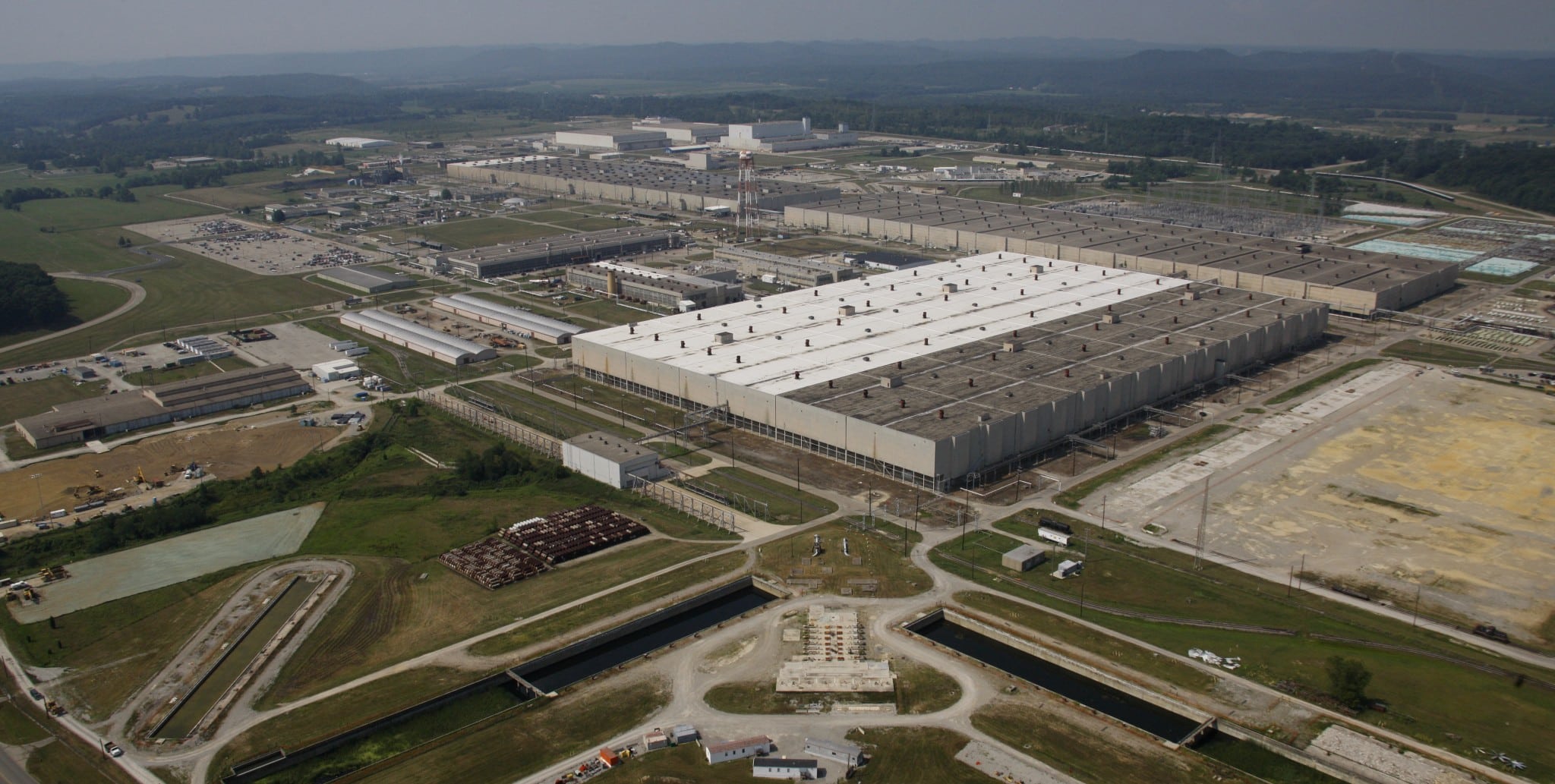
Wary that his village will become known only for the pile of radioactive waste the Energy Department plans to leave behind after it cleans up the nearby Portsmouth Gaseous Diffusion Plant, the mayor of Piketon, Ohio, is pitching the agency on a plan to reinvent the former uranium enrichment site as a DOE technology hub.
Portsmouth came online in the mid-1950s, enriching uranium for nuclear weapons and reactors, and later for commercial power plants. More recently, DOE funded an industrial-scale, next-generation uranium enrichment demonstration at the site called the American Centrifuge Project.
But uranium enrichment ceased at Portsmouth in 2001, and the Barack Obama administration pulled the plug on American Centrifuge in 2015. Directly or indirectly, the projects provided work for many of Piketon’s 2,000 or so residents, Mayor Billy Spencer told Weapons Complex Monitor this week.
For now, the DOE site is still a major employer in Piketon through Fluor-BWXT Portsmouth’s 10-year contract to clean up and tear down the campus’ old uranium enrichment facilities. That work, which is running a little behind schedule, began in 2011. Post decommissioning, DOE has a plan to help private entities redevelop the Portsmouth site, with its plentiful utility connections, for mostly industrial use.
Spencer has no faith in DOE’s plan, which he says will scare the private sector away by turning the parcel of Portsmouth most suited for redevelopment into a 100-acre disposal site for radioactive waste created during the demolition.
“DOE closed the diffusion plant here in Piketon, DOE closed the Centrifuge Plant here in Piketon and a nuclear dump is not the legacy we want for our community,” Spencer, Piketon’s chief executive, wrote in an email to Weapons Complex Monitor this week.
The Department of Energy formally decided to build the proposed on-site disposal cell in 2015, saying it was the least expensive option for dealing with about 2 million cubic yards of waste expected to be generated by cleaning up and tearing down Portsmouth’s Cold War-era uranium enrichment facilities. The Ohio Environmental Protection Agency agreed with the decision, and Sen. Rob Portman (R-Ohio), a big Portsmouth booster in Washington, is solidly behind the storage facility, using his influence in the Senate to keep construction funded.
That trajectory of events keeps Spencer worried about the site and the community’s future.
“We haven’t been able to get a commitment from DOE to clean the site for any future development that would somewhat replace the jobs that will disappear when [decontamination and decommissioning] is completed,” Spencer wrote. “Without a firm commitment from the DOE we don’t believe for a second that this site will be used by a non-DOE business.”
To that end, Spencer this week signed a village resolution asking DOE for more time to comment on a draft environmental assessment that spells out the agency’s plan to lease or sell substantially all of Portsmouth’s 3,777 acres. The village wants DOE to extend the public comment period on the draft assessment to April 12 from Feb. 18.
Piketon told Weapons Complex Monitor he would like DOE to remain in Piketon and repurpose the site to demonstrate new technology for “robotics, clean coal, [a] gas generating plant and maybe a small reactor.”
DOE’s list of possible post-demolition uses for the Portsmouth Site includes heavy industries such as manufacturing, timber processing, and electronics recycling, according to the draft environmental assessment released Jan. 4 in the waning days of the Obama administration.
Assuming DOE goes through with its plan, any public-private leases at Portsmouth are still years away. Fluor-BWXT’s decontamination and decommissioning contract runs through 2021. In the near term, the company has run into hurdles decommissioning the X-326 uranium enrichment building, portending perhaps as much as a six-month schedule slip. The company expects to have the building cold and dark — isolated from internal and external sources of electricity in preparation for tear-down — by Dec. 31.
Only after demolition and the resulting cleanup is complete would DOE start leasing unneeded property.
The Energy Department’s Office of Environmental Management in Washington, D.C., did not reply to multiple requests for comment this week.